My mom loves to tell the story of how her younger sister, a lanky looker, loved to drink vinegar when they were young. It was among the sister’s many beauty secrets, mom says. Then she’d tell us about her strained relationship with her sister, as if to imply that drinking vinegar likely added to the woman’s sour disposition. That kind of multilayered disdain is why I grew up thinking that drinking vinegar was an awful thing that turned you into a grouch.
Turns out I was wrong. Drinking vinegar has been in practice since around 4000 BCE, Emily Han writes in her debut book, Wild Drinks and Cocktails. The Chinese imbibed rice wine vinegar to aid digestion. Roman soldiers relieved their thirst with posca, herb-infused-vinegar mixed with water. Japanese samurais drank vinegar before a battle.
I’d seen vinegar made for drinking at the Chinese market a few weeks ago. They were shelved near the sake and rice wine. An anthropologist friend who is expert on Chinese culture gifted me delicious rice vinegar. Lynn said it was great to eat with dumplings as well as to drink out of tiny cups. We tried both and I agreed with her! Andy Ricker’s Thai-style drinking vinegars is flavored by Thai basil, turmeric, tamarind, and other Asian ingredients.
You don’t have to drink the vinegar neat and straight, Emily notes. For eons, people have sweetened drinking vinegar to make them more drinkable. They can be turned into sodas with a little bubbly water or a refreshing cocktail.
I decided to try Emily’s shiso vinegar, which she makes from tia to (red or purple perilla). It’s a nod to her Vietnamese-American heritage and pretty. The purple-red color and flavor of the minty, basily, coriander-like herb produced a charming vinegar.
I used an entire bunch of tia to from Lion Market, a Chinese-Vietnamese store in San Jose. My tia to plant in the yard didn’t have the quantity required. The vinegar is fun to make, especially when you witness the vinegar turn from golden to rosy pink. It’s also easy and fast to prepare.
What to do with the shiso vinegar? I tried making a salad dressing (it was a touch too sweet). It’s really designed for drinks. (Duh, it’s “drinking vinegar!”) Here are options:
Emily suggests preparing a nifty soda with a 1:4 ratio of shiso vinegar to sparkling water (I used Pellegrino). Yowza, the shiso flavor really comes through. It’s zingy and delicious.
I added a garnish of blueberries for the upcoming July 4 (or just for fun) to make it look like a festive mocktail. My husband said that if non-alcoholic cocktails tasted that good, he’d drink them more often! The soda was surprisingly delicious. And with all the herbs involved, it had to be good for us to some degree. (I've read that it's a good breath refresher as well as good for relieving colds and fevers.)
We also tried it with ginger beer. My favorites include Fever Tree (no alcohol) or Fentiman’s (with a little alcohol). The ginger and shiso turn out to be a great pairing. Again, I used a 1:4 ration of shiso vinegar to ginger beer. You may need a little less ginger beer if it’s super sweet. Or, back off the ginger beer a tad and add some vodka to make a twist on a Moscow mule. (Many Russian tourists go to Vietnam these days.)
We were super surprised at how refreshing the shiso drinking vinegar is, particularly in summer. If you don’t have tia to around, try another herb, such as Thai basil or lemon balm.
If you're feeling Viet-inspired, check the Vietnamese herb primer for heady leaves to consider. Use leaves and add stems if you need the extra to reach the weight needed. I washed my shiso, then shook off most of the water before I weighed it. It had gotten a little dehydrated from sitting in the fridge. Summer is the season for Southeast Asian herbs so buy a big bunch for this vinegar.
RECIPE
Shiso Vinegar
Makes: About 2 ½ cups (600 ml)
Ingredients
- 1 cup (235 ml) water
- 4 ounces (112 g) red shiso (tia to, purple perilla) leaves and stems
- 1 cup (235 ml) unseasoned Japanese rice vinegar
- 1 cup (200 g) sugar
Method
- Put the water in a small (about 1.5 quart | 1.5 l) saucepan and bring to a boil over high heat. Add the leaves, stir to slightly soften, the lower the heat to simmer for 5 minutes. Occasionally stir to facilitate cooking the leaves. Remove from the heat and let sit for 5 minutes.
- Strain the shiso liquid through a fine mesh strainer directly into the rice vinegar (have it in a measuring cup for ease). The vinegar will turn a deep rosy pink! If you like, strain the tinted vinegar through a coffee filter to remove lingering impurities.
- Add the sugar to the vinegar and reheat over medium-low heat. Simmer for 45 to 60 seconds, then remove from the heat. Cool completely in the pan, then transfer to a sterilized container with a nonreactive lid. Keep refrigerated for up to 1 month.
Related post: Original Singapore Sling recipe (another knockout, though a little more time consuming and loaded with liquor)













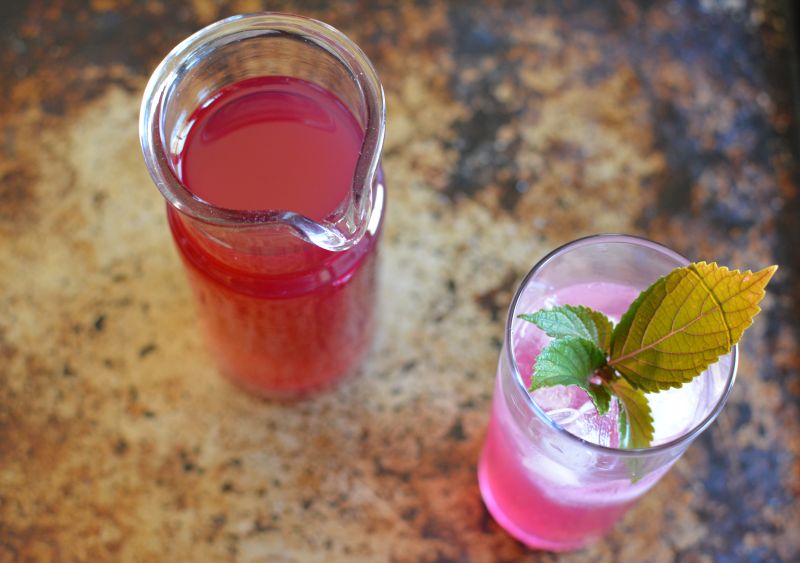
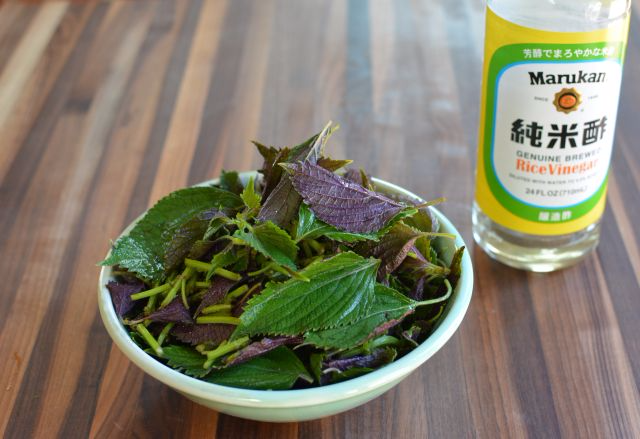
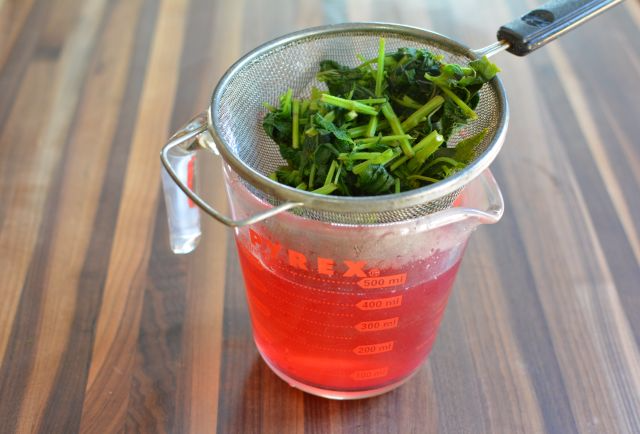
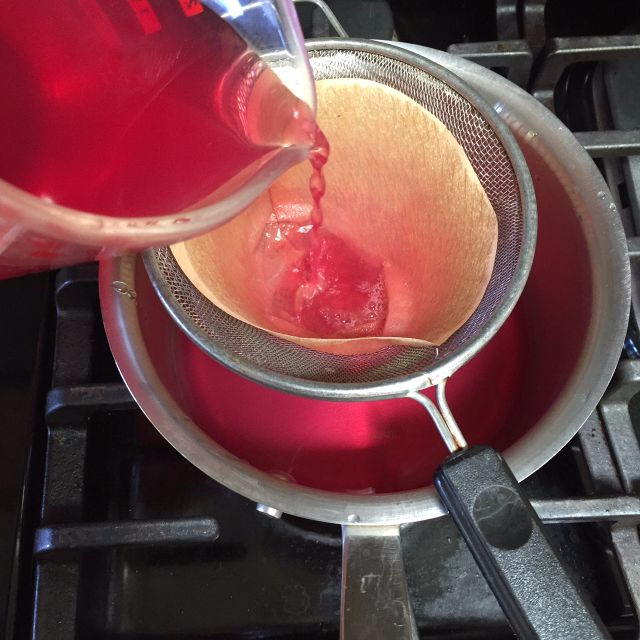
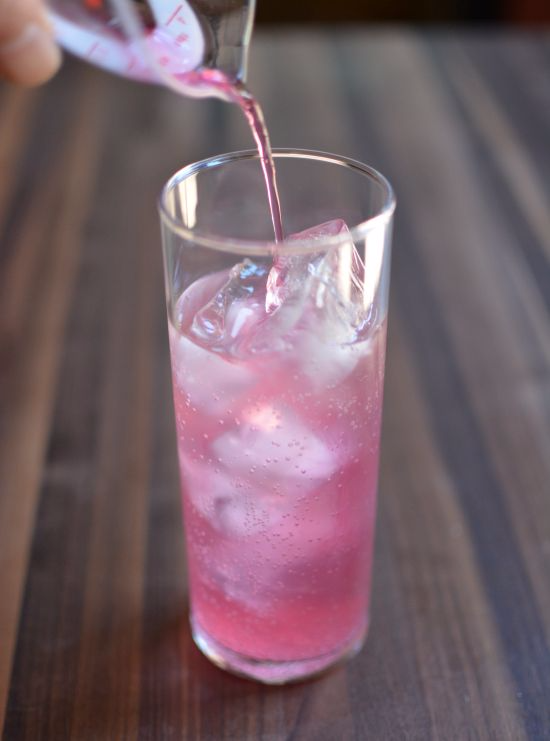
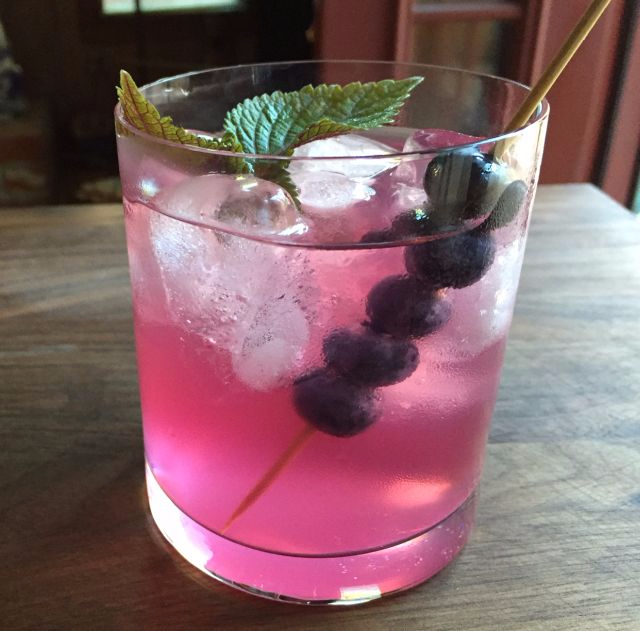

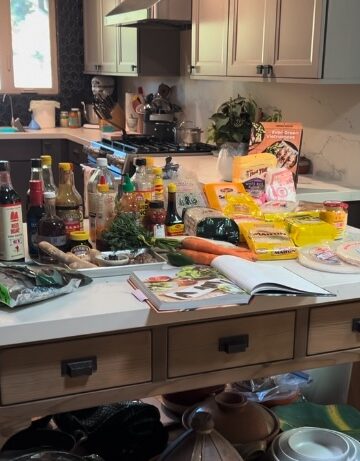


Lindsey says
Have you made this with other kinds of vinegar? I have some dried shiso I grew this year. Can I use the dried? Or should I use fresh?
Andrea Nguyen says
I have never tried other kinds of vinegar but you can certain try apple cider, for example. You may have to add a little sugar but that may be up to your taste. I've never used dried shiso. The flavor may be there but the color will not. You could try and see. No harm in trying. That's my cooking life. 😉
Kayra says
These seems like ALOT of shiso leaves by weight for one cup of water. Is 3 oz and actual measurement? More than a cup of unpacked shiso leaves weighs only 1oz on my home food scale. So is the ratio really 1 cup water to 4cups leaves? Thank you!
Kayra says
sorry I meant 4 oz!
Andrea Nguyen says
No problem, I understand, Kayra!
Andrea Nguyen says
It is a lot. Yup, you need that much for good flavor and color.
Janet says
Shiso is one of my favorite Japanese flavors. Is this recipe what is called a shrub syrup? I have made fruit shrubs (white peach/balsamic) before and I like to add them to sparkling water with ice.
Andrea Nguyen says
Yes it could be characterized as a shrub!